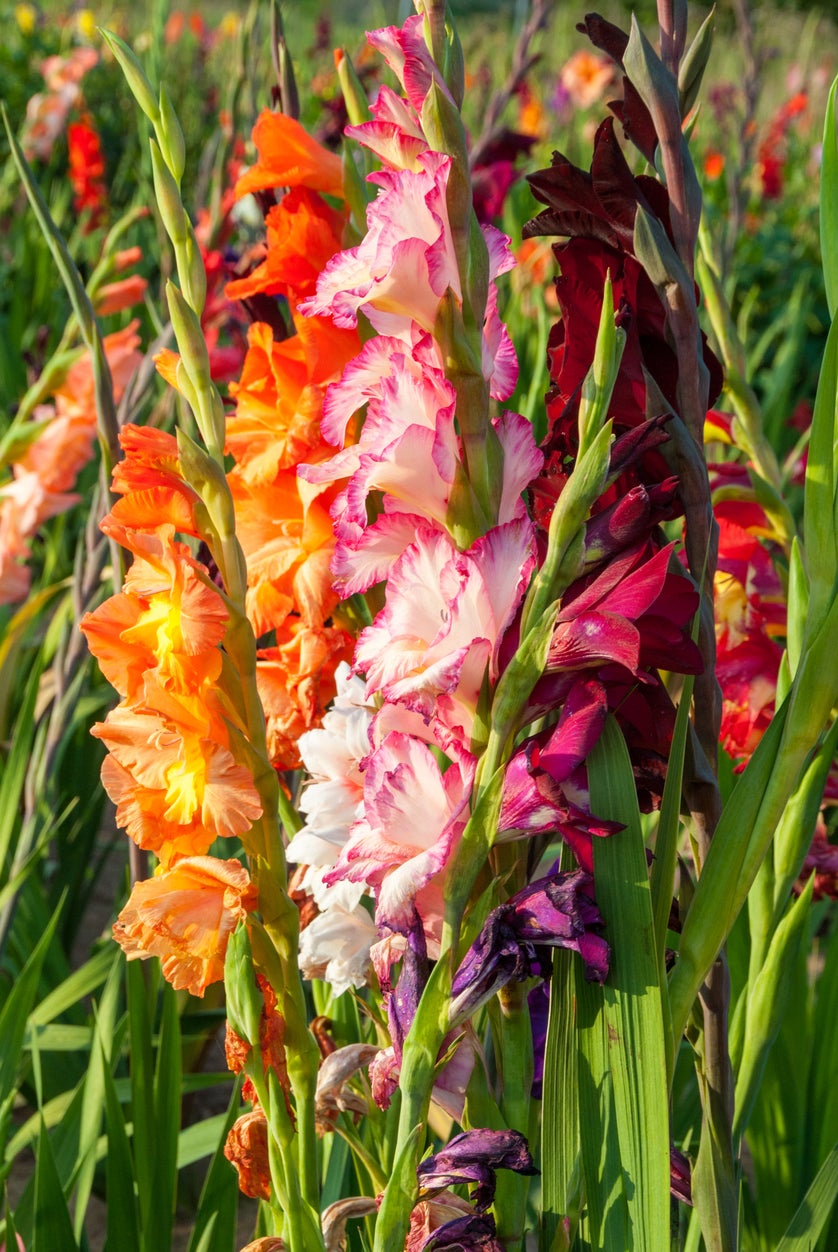Gladiolus Are Falling Over – Learn About Staking Gladiolus Plants

Gladioli are extremely popular flowers grown for their lengthy profusion of colorful blooms that can last from summer through fall. Prolific bloomers that they are, you may find that the gladiolus plants are falling over due to the heaviness of the blossoms or during wind or rain storms. How do you hold up glads? Staking gladiolus plants will keep their brightly colored heads from dipping or breaking, and there are any number of items that can be used as gladiolus plant stakes.
How to Stake a Gladiolus
Native to South Africa, southern Europe, and the Near East, these perennial favorites are grown from corms planted in the early spring. As mentioned, the weight of all these blooms, the sheer height of the plants – glads can grow as tall as 5 feet (1.5 m.) – and/or rainy or windy conditions may result in gladiolus that are falling over. So, how to hold up glads in the garden? Staking gladiolus plants is the obvious solution, but along with staking the plants, plant them in groupings. Single plants can be hard to stake and look obvious. Grouping of glads are easier to stake and make for innovative solutions such as using a trellis to grow them through. Place a lattice supported by short stakes parallel to the ground over the area the corms are planted. Allow the gladiolus to grow through the lattice. Voila, creative staking. Groupings of gladiolus can also be placed against a supportive structure such as a fence, trellis or even garden art. Use fishing line, jute or garden twine to tie the blooms to the support. Tie the flowers closer to the top of the buds, ideally in the middle of the flower buds. Grouping the glads together not only helps to hide the ties, but allows them to help support each other. Of course, if you do not plant the gladiolus together but rather have them on their own, they can be tied in the same manner to a garden stake. Gladiolus plant stakes can be made of wood, bamboo, or even a piece of metal rebar, whatever gets the job done. Another easy way to support the gladiolus is individual stem flower supports. These make it super simple to support the heavy blooms without tying them up. They are made of coated metal that is curved just so to encase flower stems. In a pinch, I suppose even metal wire hangers could be straightened out and then bent to create a single blossom support. Strips of panty hose work well too. While it is very likely that you will need to stake your gladiolus, how you do it and with what materials are limited only by your imagination and ingenuity.
Sign up for the Gardening Know How newsletter today and receive a free copy of our e-book "How to Grow Delicious Tomatoes".

Amy Grant has been gardening for 30 years and writing for 15. A professional chef and caterer, Amy's area of expertise is culinary gardening.
